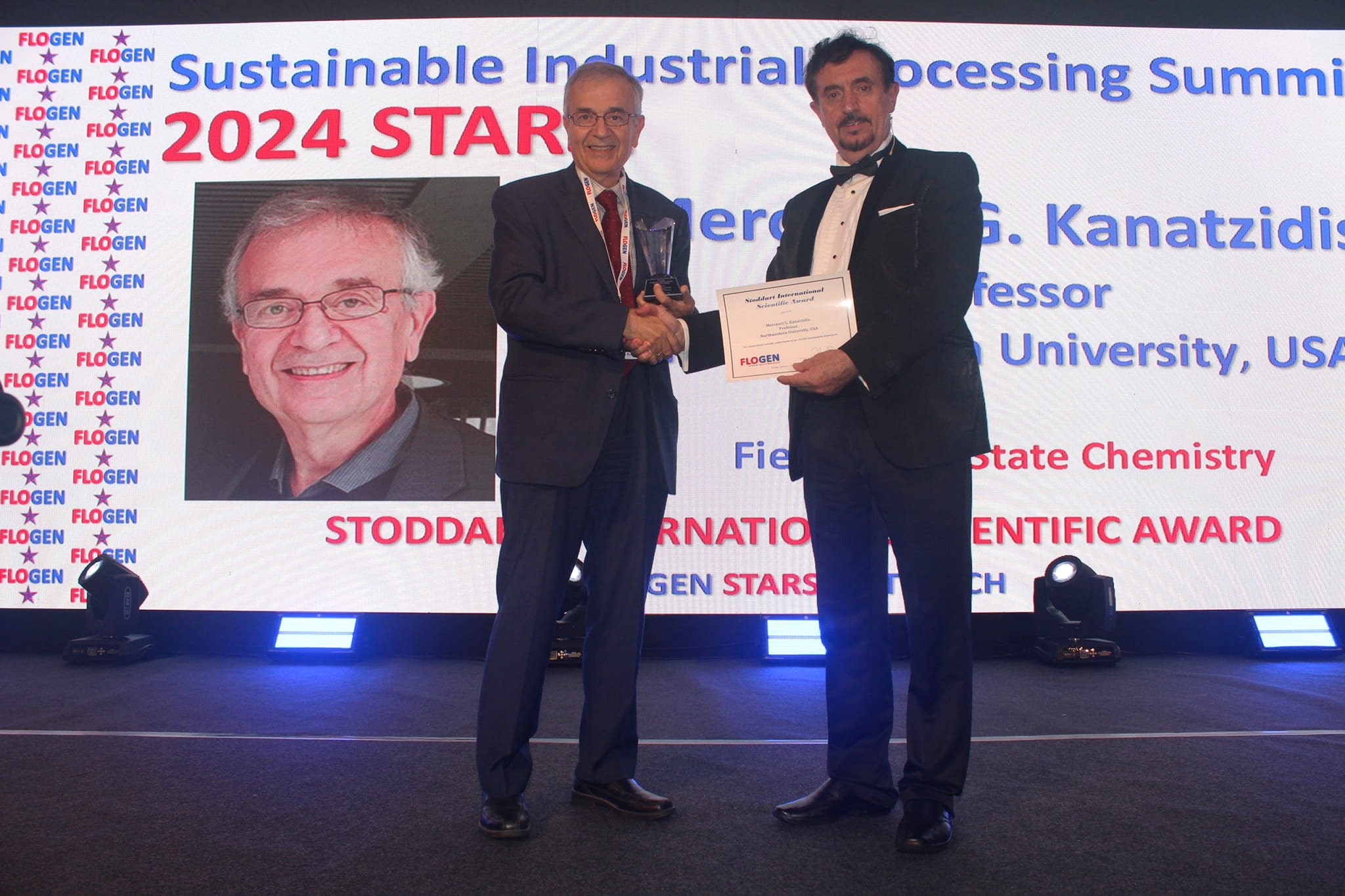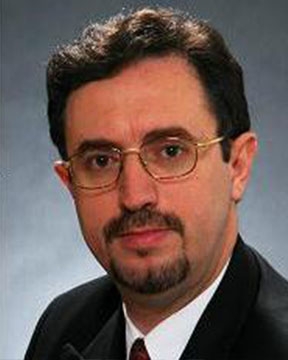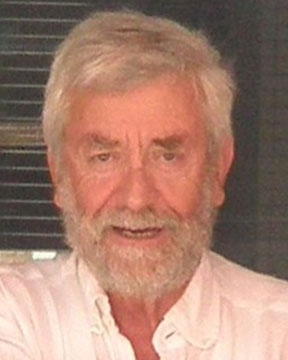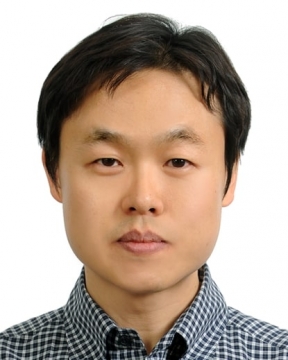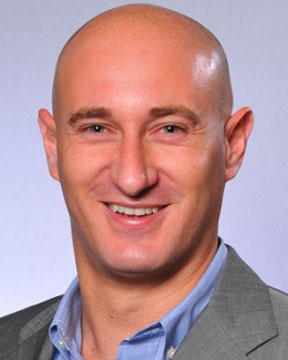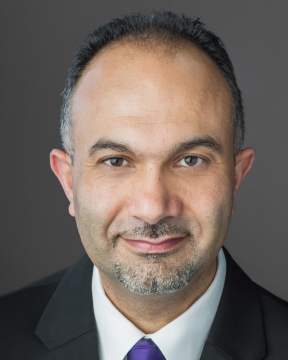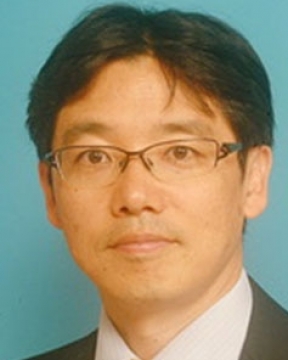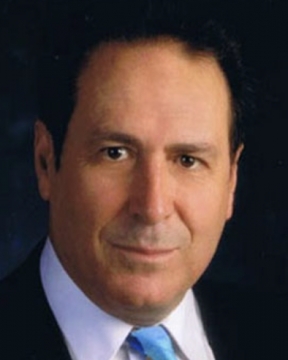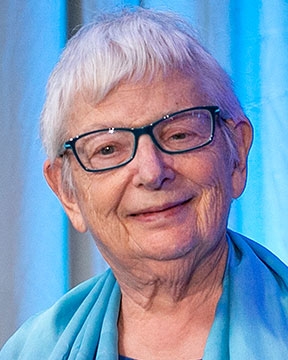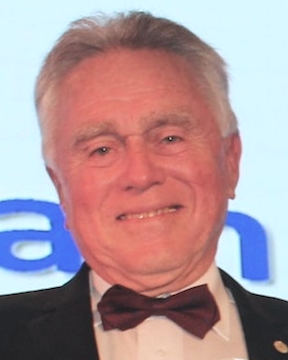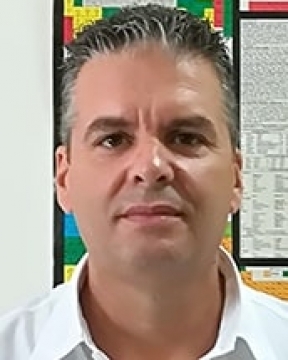On Materials/Solid State Chemistry and Nanoscience for Sustainable Development (4th Intl. Symp.)

Bio | CV | Publications
This major symposium is in honor of the distinguished work and lifetime achievements of Prof. Mercouri G Kanatzidis a prominent chemist and researcher known for his contributions to the field of inorganic chemistry and materials science. Currently, he holds a position of Professor of Chemistry at Northwestern University and serves as a Senior Scientist in the Materials Science Division at Argonne National Laboratory, located in Argonne, Illinois.
Kanatzidis is widely recognized for his work in the development and study of advanced materials, particularly inorganic compounds and semiconductors. His career is characterized by excellence, innovation, and a profound impact on the scientific community. His journey from academia to groundbreaking research has left an indelible mark on the world of inorganic chemistry and materials science, inspiring generations of scientists to push the boundaries of knowledge and discovery.
His research has encompassed a wide range of topics, including the synthesis and characterization of novel materials, thermoelectric materials for energy conversion, and the exploration of perovskite materials for solar energy applications. Throughout his career, Kanatzidis has received numerous awards and honors for his scientific achievements. His research has significantly advanced our understanding of materials and their potential applications in various fields.
Born in 1957, Mercouri Kanatzidis has dedicated his life to advancing the boundaries of scientific knowledge. His career journey showcases a remarkable trajectory of academic and research achievements. Kanatzidis began his professional journey as a Postdoctoral Fellow at Northwestern University in 1987, marking the early stages of his scientific exploration. Over the years, he expanded his horizons through various academic positions, including roles as a Professor of Chemistry at Michigan State University. His academic journey has been marked by continuous growth and a commitment to the pursuit of knowledge.
In the realm of education, Kanatzidis holds a Ph.D. in Inorganic Chemistry, which he obtained in 1984 from the University of Iowa. Prior to that, he completed a Postdoctoral Associate position at the University of Michigan and earned a Bachelor of Science in Chemistry from Aristotle University of Thessaloniki in November 1979. His educational background laid a solid foundation for his future research endeavors.
Throughout his illustrious career, Kanatzidis has received numerous awards and accolades, underscoring his exceptional contributions to science and research. Some of the most notable recognitions include the Centenary Prize from the Royal Chemical Society, induction into the American Academy of Arts and Sciences, and the naming of a new mineral, "kanatzidisite," by the International Mineralogical Society. His achievements have extended into the global scientific community, positioning him as a highly regarded and influential figure.
Mercouri G. Kanatzidis has made significant contributions to the field of chalcogenide materials synthesis and discovery, particularly in advancing the science of synthesizing new materials. His pioneering work in this area has led to the development of novel chalcogenide compounds with exceptional properties and applications. Kanatzidis's research has not only expanded our understanding of chalcogenide materials but has also opened up new avenues for designing and creating advanced materials with tailored properties. His groundbreaking achievements include the synthesis of novel chalcogenide compounds, elucidation of their crystal structures, and exploration of their unique electronic, optical, and thermoelectric properties. Kanatzidis's contributions in this domain have not only enriched the field of materials science but have also paved the way for the development of innovative technologies and devices with practical applications.
For example, Kanatzidis has pioneered a new class of materials with the creation of highly effective chemical sorbents tailored for the selective removal of heavy radioactive ions, both from nuclear waste and areas affected by nuclear accidents. He introduced a novel concept: metal sulfides with ion exchange properties that surpass the effectiveness and selectivity of previously developed materials. These materials replace innocuous sodium or potassium ions with heavy metals, forming robust bonds. This innovative design stemmed from a comprehensive understanding of the underlying chemical principles governing radionuclide selectivity, demonstrating that metal sulfide ion exchangers exhibit stronger affinities for heavy metal ions than nonhazardous lighter ions. Remarkably, these sulfide materials can also remediate sites contaminated with heavy metals such as mercury, lead, cadmium, chromium, and thallium.
Mercouri G. Kanatzidis has also made remarkable strides in the field of thermoelectric materials and the design concepts aimed at achieving record-breaking heat-to-electricity conversion. His pioneering work in this area has led to significant advancements in thermoelectric materials, particularly through innovative strategies like endotaxial nanostructuring of semiconductors. In the early 2000s he pioneered the highly effective strategy known as "nanostructuring," which has revolutionized our understanding of thermoelectric materials and resolved the longstanding challenge of interdependence. In nanostructuring, meticulously crafted nanodots of a specific material are strategically embedded within a thermoelectric semiconductor. These nanodots serve as robust barriers to heat transfer, significantly reducing thermal conductivity while preserving the flow of electrons, leading to exceptional electrical conductivity. The stark contrast in mass between the nanodots and the surrounding matrix facilitates phonon scattering, while the concept of endotaxy enhances electron mobility, and reduces thermal conductivity collectively enhancing the overall performance of thermoelectric materials. This ushered in a new era in thermoelectric research, enabling the development of materials with unprecedented properties and paving the way for groundbreaking advancements in thermoelectric technology.
Kanatzidis has achieved a remarkable breakthrough in the realm of solar photovoltaics, sparking the launch of the perovskite excitement within the scientific community. In May 2012, he astounded researchers with a groundbreaking discovery—the solid-state semiconductor CsSnI3 could serve as an ideal replacement for the iodide liquid electrolyte in dye-sensitized solar cells, a milestone documented in Nature 2012. This was the first paper reporting on the application of a solid film of halide perovskite in a solar cell device and paved the way for the utilization of CH3NH3SnI3 perovskite as a lead-free photovoltaic material, as demonstrated in Nature Photonics 2014. Notably, this marked the first instance of solution-processed solar cells employing a continuous solid layer of a halide perovskite, simplifying fabrication to the extent that they could be readily produced in chemistry labs. This development revolutionized the approach to low-cost photovoltaics, prompting subsequent publications from various research groups reporting increasingly higher efficiencies based on analogous lead-based CH3NH3PbI3, following Kanatzidis's 2012 publication. This momentous period signaled the birth of the perovskite photovoltaics field, which has since expanded to encompass thousands of laboratories worldwide, disrupting the landscape of affordable solar energy technology with record-breaking efficiencies exceeding 27%. This pioneering work has spurred intense global commercialization efforts, drawing investment and redirecting photovoltaic research directions for numerous groups and companies, all influenced by Kanatzidis's pioneering contributions.
Kanatzidis's impact on the scientific world extends beyond awards and honors. He boasts an extensive publication record with over 1,600 publications and has been cited over 177,000 times, showcasing the depth and breadth of his contributions to scientific literature. Additionally, he holds 60 patents, reflecting his innovative approach to advancing materials science.
In terms of professional service, Mercouri Kanatzidis actively engages with the scientific community. He has served on editorial advisory boards for prestigious journals, contributed to awards committees, and acted as a reviewer for manuscripts and funding agencies. His dedication to fostering scientific progress and collaboration is a testament to his commitment to the field.
ROUND TABLE DISCUSSIONS
A round table discussion open to everyone interested will be organized during the symposium. This will allow high level representatives of various industries, technologies, and academic disciplines to discuss and debate freely, without reservations, all topics of this symposium and identify possible research and development pathways towards a future industry with increased sustainability. Click here for a description of the topics of symposium and the round table.
You are cordially invited to actively participate in this symposium by submitting and presenting a paper, or by attending the round table. We look forward to meeting you at this world class symposium.
